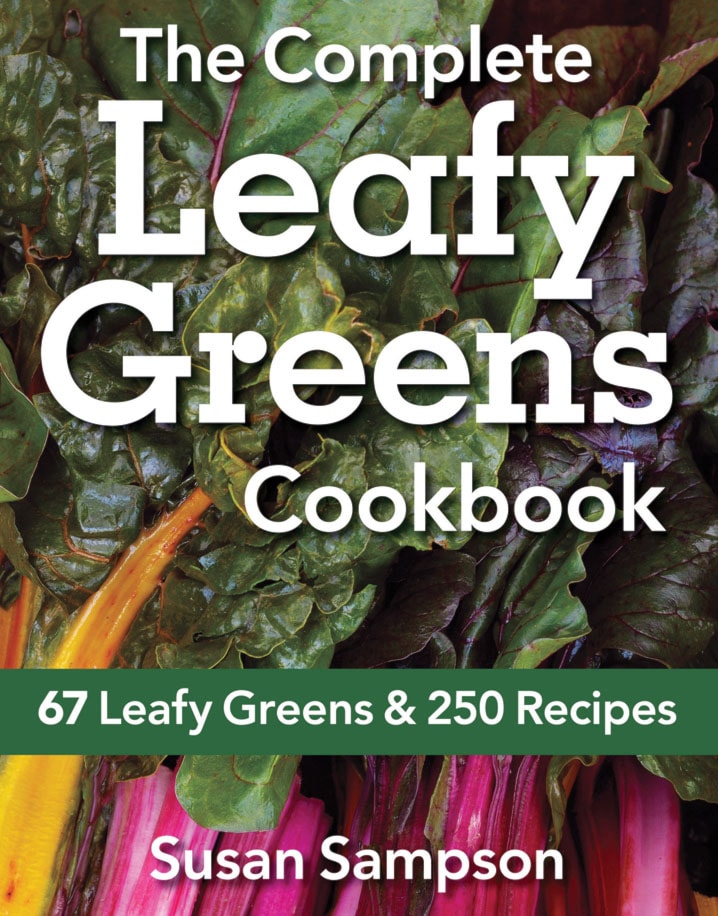TORONTO — Susan Sampson has always loved greens. In a spirit of adventure, the food writer decided to explore “the wide world of wonderful greens” and develop a comprehensive guide.
“The Complete Leafy Greens Cookbook” (Robert Rose) delves into 67 different types of leafy greens and includes 250 recipes she developed.
“We’re always talking about healthy foods. You can’t get much healthier than these greens,” says Sampson, a self-taught cook and former Toronto Star food columnist.
“They’ve got a lot of antioxidants in them, chlorophyll is a very healthy ingredient. If something is healthy, doesn’t cost a lot and tastes good, then I think that’s a darn good combination.”
She thinks the renaissance of kale has given rise to an interest in leafy greens.
“Kale was always sort of a supermarket staple, but a lot of people just kind of looked at it, didn’t really know what to do with it,” says the author of two other books, “12,167 Kitchen and Cooking Secrets” and “200 Best Canned Fish and Seafood Recipes.”
“Then more cooks started discovering it and they not only cooked it, they started putting it in salads and made kale chips and kale pizza and that was sort of a stepping stone to other greens. People found that the greens are not only delicious but very healthy and generally they don’t cost a lot.
“I think it opens people to experimentation. There’s a wide world of wonderful greens out there. People want to explore new territory and that’s actually what I wanted to do in my book as well.”
She started with the so-called standard greens — spinach and lettuce are probably the most popular and well-known — and “kept expanding out and out and out.”
“I shopped like crazy. If I found a green that I wasn’t familiar with I bought up a bunch and started cooking with it.” Living near Chinatown in Toronto was a bonus. Then came the research.
“Once I saw the greens, they weren’t always labelled. I had to cross-reference everything online and I had to go through a lot of scientific botanical lists, which were quite complicated, but once I got going, once I pinned down the species, that eliminated a lot of confusion.”
While there are officially 67 greens in the book, there are references to many more. Included are such exotics as African bitter leaf, Japanese mustard greens, Maritime fiddleheads and mizuna.
She lists the species and common names, and provides tips on buying, storing, preparing and consuming each one. A photo helps with identification.
There are also health notes, in which she lists nutritional benefits along with folklore, remedies and herbal medicine practices. Warding off evil spirits, aphrodisiac, detoxification and alleviating fever, constipation or wounds are just a few examples.
If you’re a greens newbie, Sampson suggests starting with mild forms, such as spinaches, chickweed, purslane, mache and chard.
“They say you develop a taste for greens the more you eat.”
Begin with small quantities and work your way up.
“You can start by taking something very familiar, like lettuce, and not relegating it to the salad bowl. For example, lettuce sauce is really super-delicious.”
She adds chopped romaine to soups like minestrone or pasta fagiole. Add “a little layer of goodness” to lasagna or other noodle dishes with chopped spinach.
Some of her favourite greens are arugula, mache, chard, fiddleheads and tatsoi.
Greens are best measured by weight, Sampson says, but she provides volume equivalents.
“Volume measurements can just vary so much by how it’s chopped up, how it’s packed into the cup, that sort of thing. So I tried my best to get the equivalent for loosely packed greens. But I always recommend people go by weight if they can go by weight.”
One of the oddest greens she came across is houttuynia, also called fishwort. It’s a Vietnamese green with a sharp, metallic, fishy flavour.
“Even in Vietnam they’re ambivalent about it. I loved every single green I tried except for that one because it literally tastes and smells like fish when you cook it. Like many greens it’s certainly an acquired taste.”
The recipe she developed to feature houttuynia is lemon vermicelli, a twist on a classic Vietnamese dish.
“The noodle recipe is great, but if I made it again I would certainly switch out the houttuynia for something else. But it’s fun testing all these new things.”
